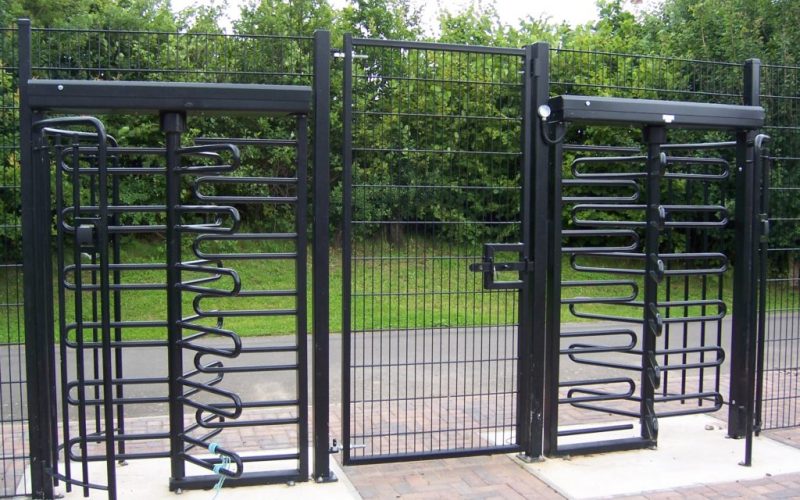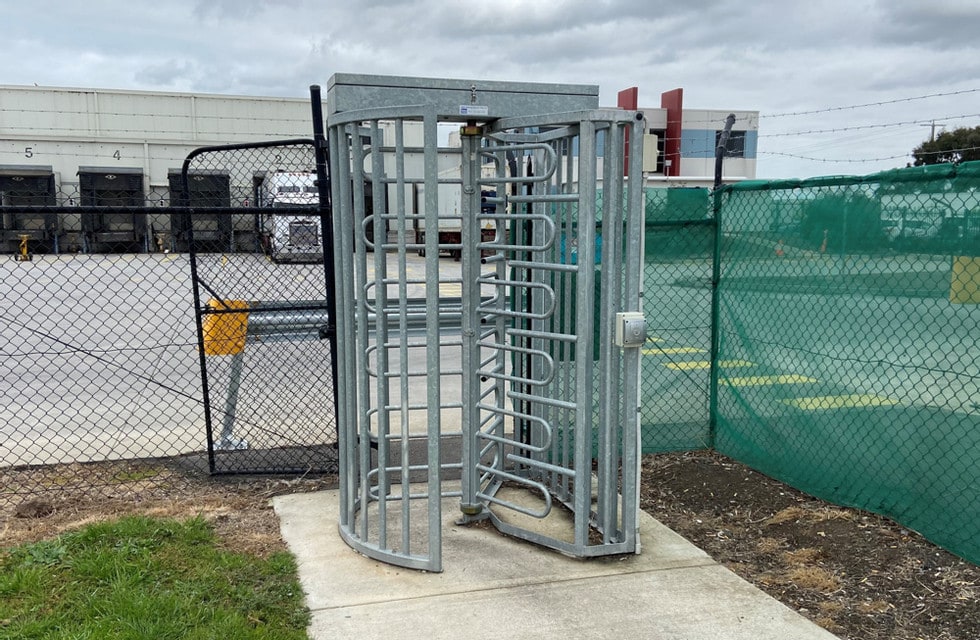
A turnstile (also called a turnpike, gateline, buffalo gate, automatic gate, in some areas a turning gate) is a type of gate that allows one to pass at a time. In addition, a turnstile can only restrict passage for people who insert a coin, ticket, pass, or another form of payment. For example, we can find these types of gates in the metro stations also.
Modern turnstiles are now incorporating biometrics which means retina scanning, fingerprinting, and other unique human features that can be scanned. It is one of the best ways to provide security and protection.
1. How does a turnstile gate work?
Capable of controlling access without physical barriers, optical turnstiles work by traversing passersby using infrared light beams with ID cards or badges. If an optical turnstile detects an unauthorized entry, the system raises the alarm or signal.

Turtles are a gate that allows one to go at a time. This enables security to efficiently prevent potential problems or restrict any prohibited materials entering secure premises.
2. Definition of Turnstile Gates:
Turnstile gates control access to entry points and exits. They allow only one person to pass through an access point and can come in different shapes. Also, turnstile gates can be one-way or two-way, and the benefits of access control are becoming more and more understood worldwide and are now being used more frequently.
3. Variation of turnstile gate:
Turnstile gates are available in a variety of waist height and full height. Depending on the project’s needs, disabled accessible ADA gates are also open. Different finishes and options can further help create a turnstile gate as per the commercial needs either of home, or of a commercial garage.
4. Turnstile gate application:
Turnstile access control gates are ideal for amusement parks, corporate lobbies, construction sites, stadiums, industrial settings, or any other place where access control is preferred. Turnstile gates are versatile solutions to many access control problems.
Turnstile access control is often used in factories, warehouses, stadiums, universities, public transport stations, and casinos. A turnstile gate is ideal for crowd management – your location provides security, convenience, and efficiency. It is extremely cost-saving, saves time during an emergency and makes any process of transportation easier and more streamlined.
5. Types of turnstile gates
- Waist Height Pedestrian Turnstile Gates: One of the most common types of access control turnstiles, waist height pedestrian gates can take the shape of a rotating tripod, upward arm, sliding, or rotating barrier so that only one person can cross at a time. Once access is granted, the person passing through some waist-high turnstile type has to push the wall out of the way (e.g., tripod barrier), while others open automatically to allow entry.
- Full-height pedestrian turnstile gates: Providing a high level of physical safety, full-height turnstile gates are much more difficult to cross without clearance. Traditional revolving doors limit the number of people who can enter and exit.
- Optical Pedestrian Turnstiles: Capable of controlling access without physical barriers, optical turnstiles use infrared light beams with ID cards or badges to monitor passersby. You find better operational flexibility in these types of turnstiles.
- Vehicle Access Control Turnstile: Boom weapon control access barriers for vehicles entering and leaving car parks, toll roads, and bridges. Arm chains or ladder-style walls can be attached to skirts that prevent pedestrians from walking under the car’s turnstile.
Conclusion
Access control systems can be used wherever there is a need to control the flow of pedestrians or vehicles. Building safety is just one reason to install turnstile gates; For example, offices and commercial establishments may use turnstile gates to monitor visitor access or, if integrated with an automated time and attendance system, manage employees’ work hours and on-site time.





